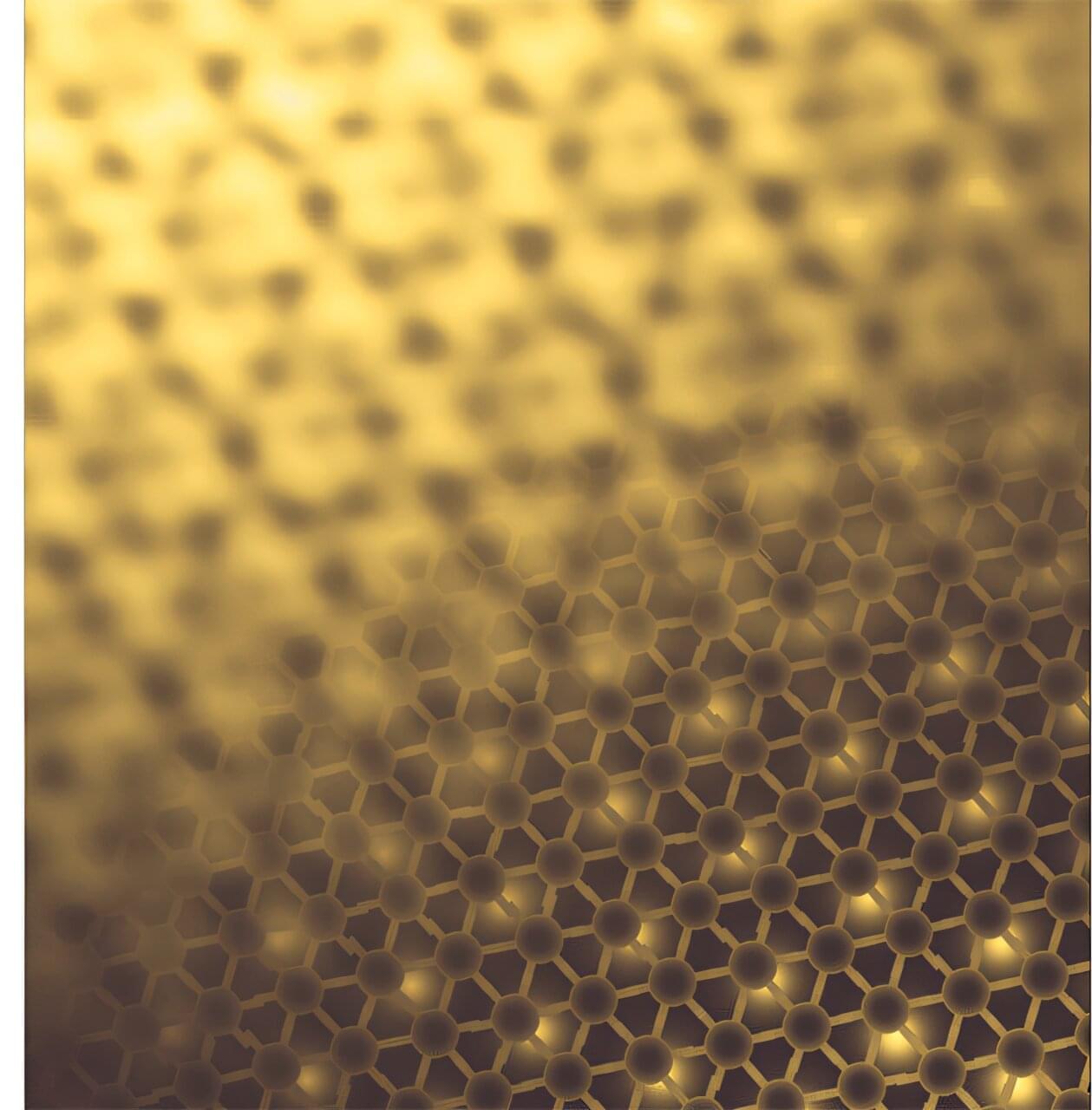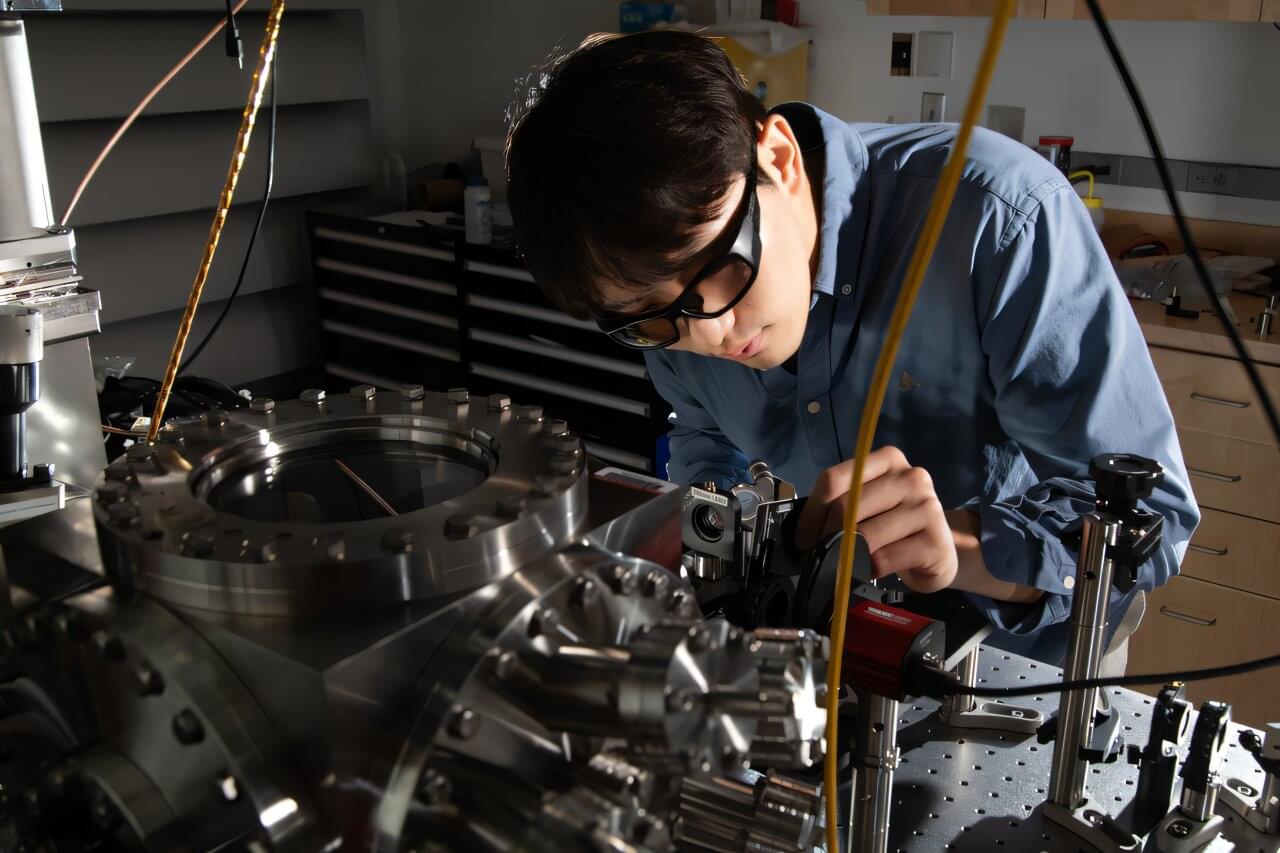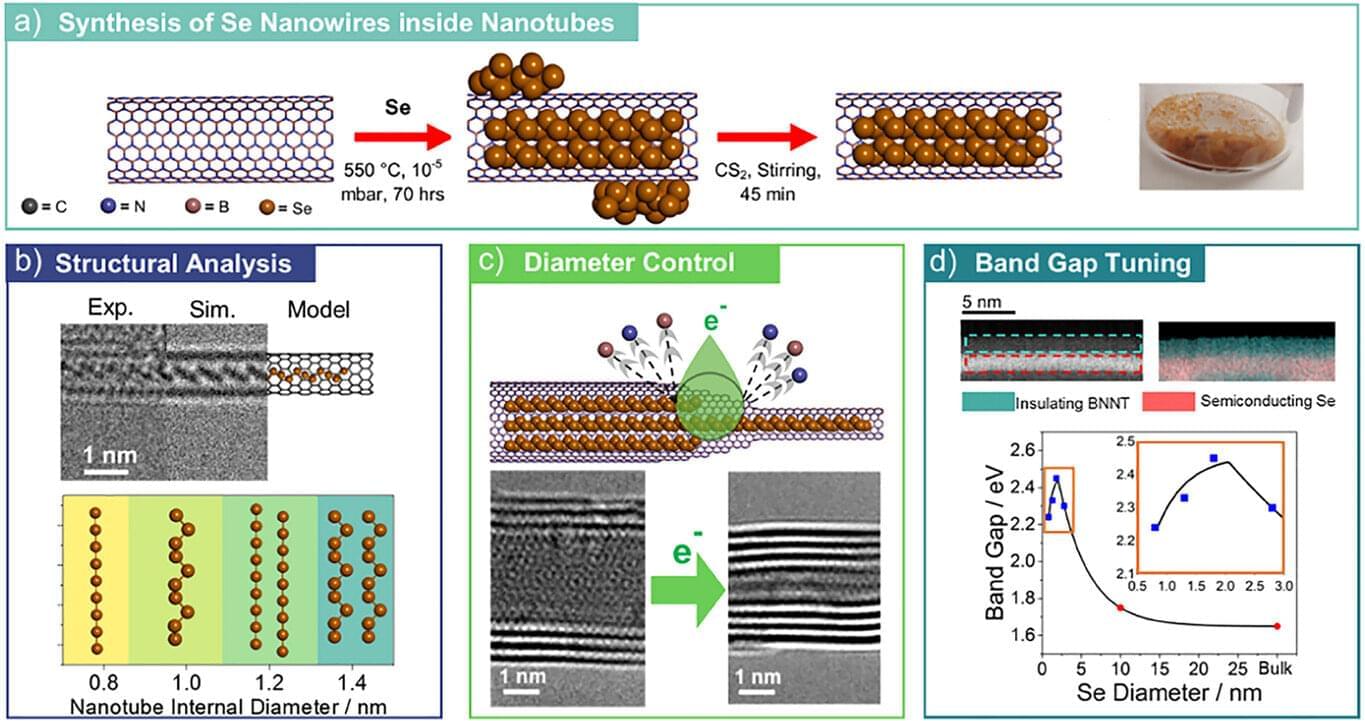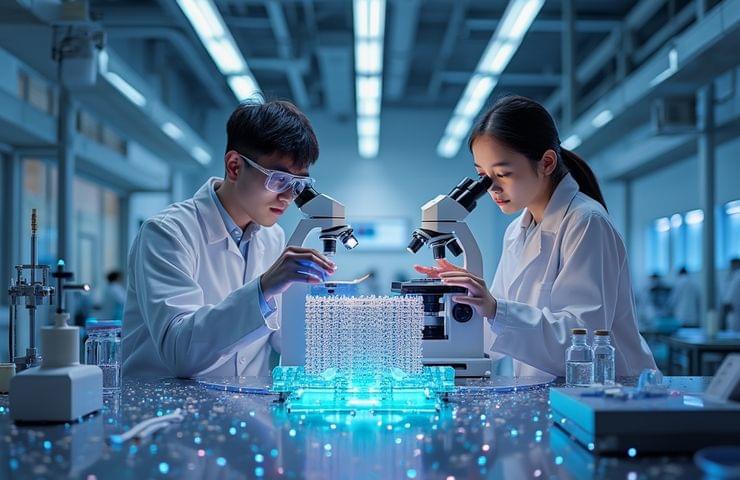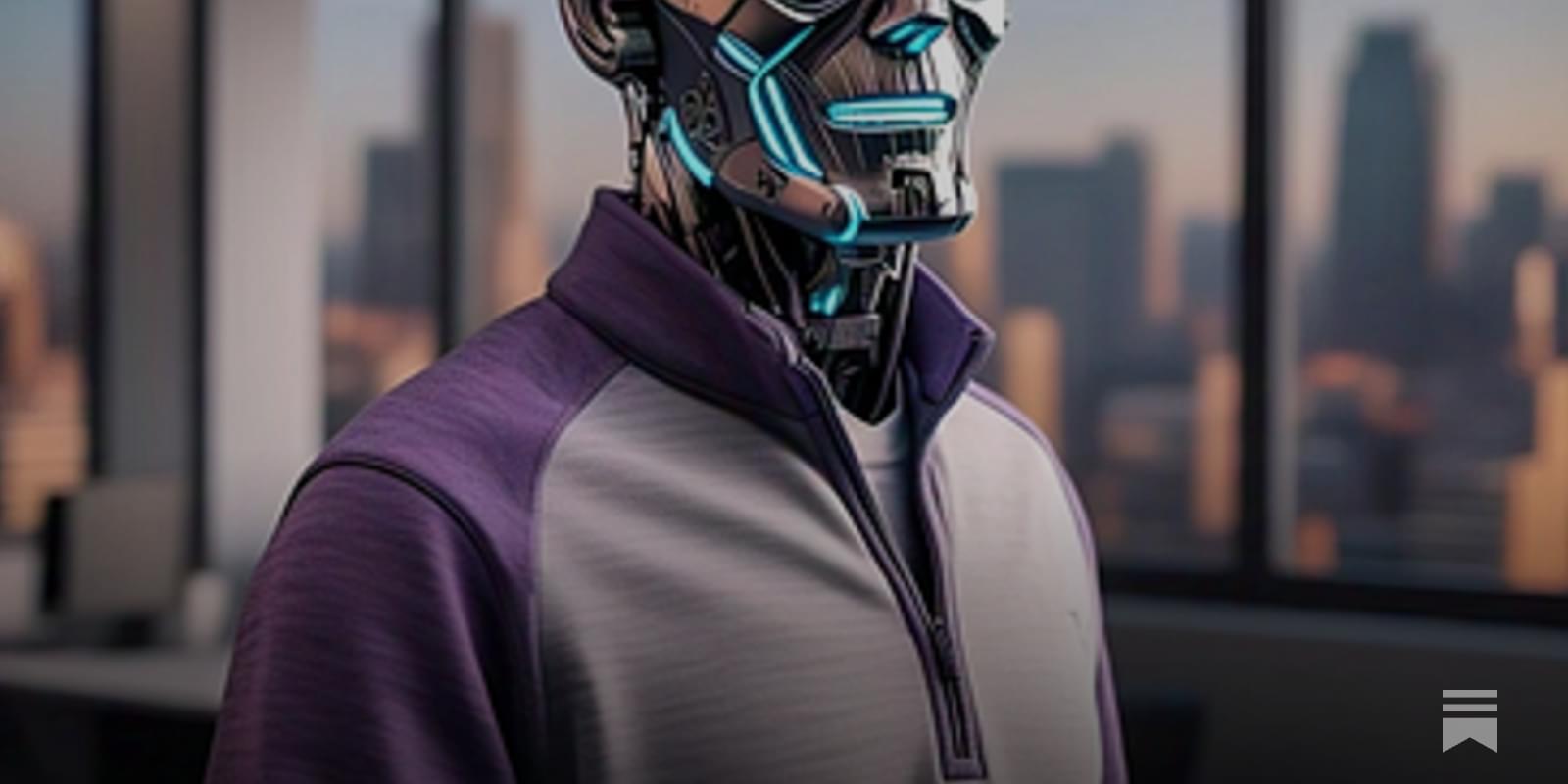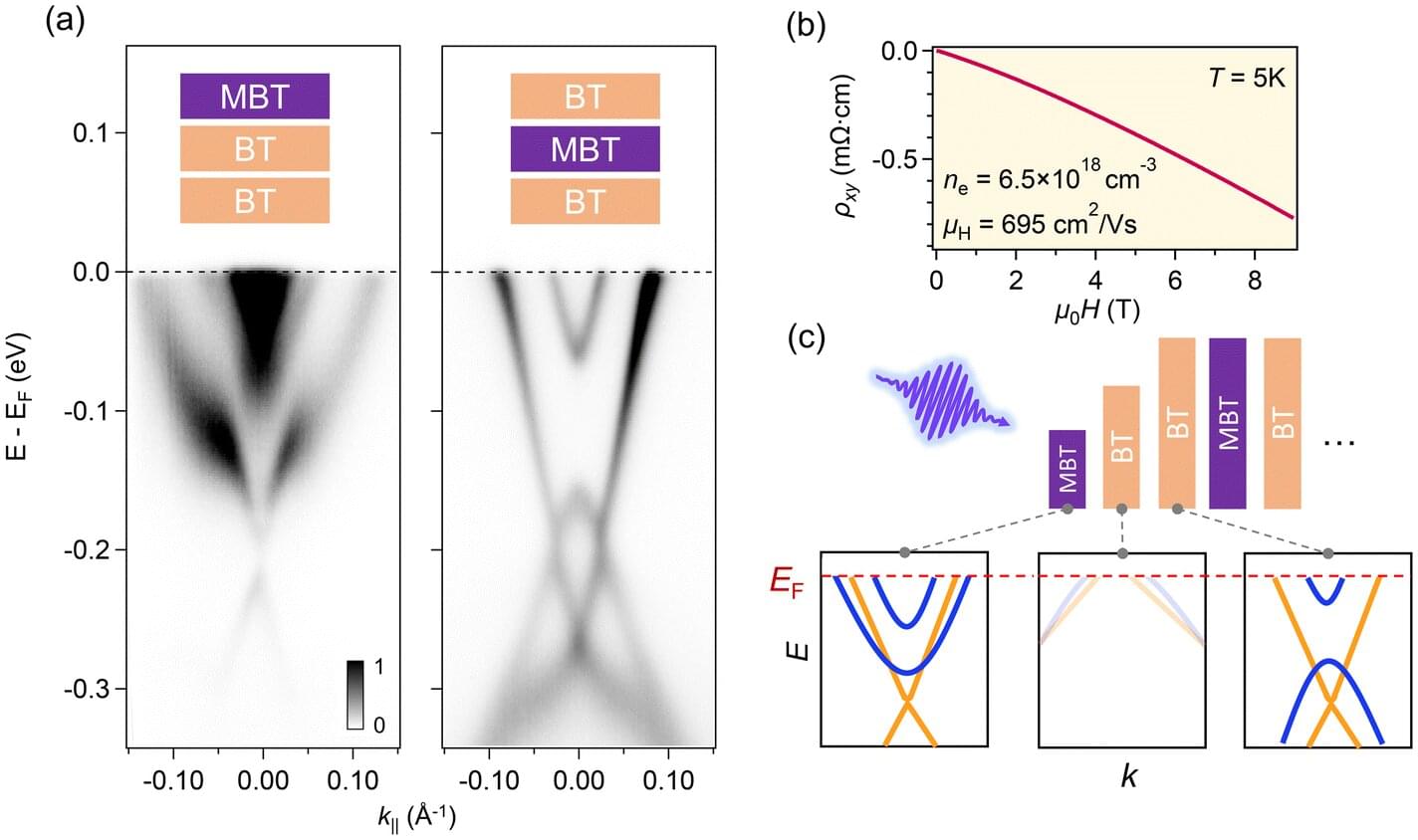Rutgers University–New Brunswick researchers have discovered a new class of materials—called intercrystals—with unique electronic properties that could power future technologies.
Intercrystals exhibit newly discovered forms of electronic properties that could pave the way for advancements in more efficient electronic components, quantum computing and environmentally friendly materials, the scientists said.
As described in a report in the science journal Nature Materials, the scientists stacked two ultrathin layers of graphene, each a one-atom-thick sheet of carbon atoms arranged in a hexagonal grid. They twisted them slightly atop a layer of hexagonal boron nitride, a hexagonal crystal made of boron and nitrogen. A subtle misalignment between the layers that formed moiré patterns—patterns similar to those seen when two fine mesh screens are overlaid—significantly altered how electrons moved through the material, they found.
